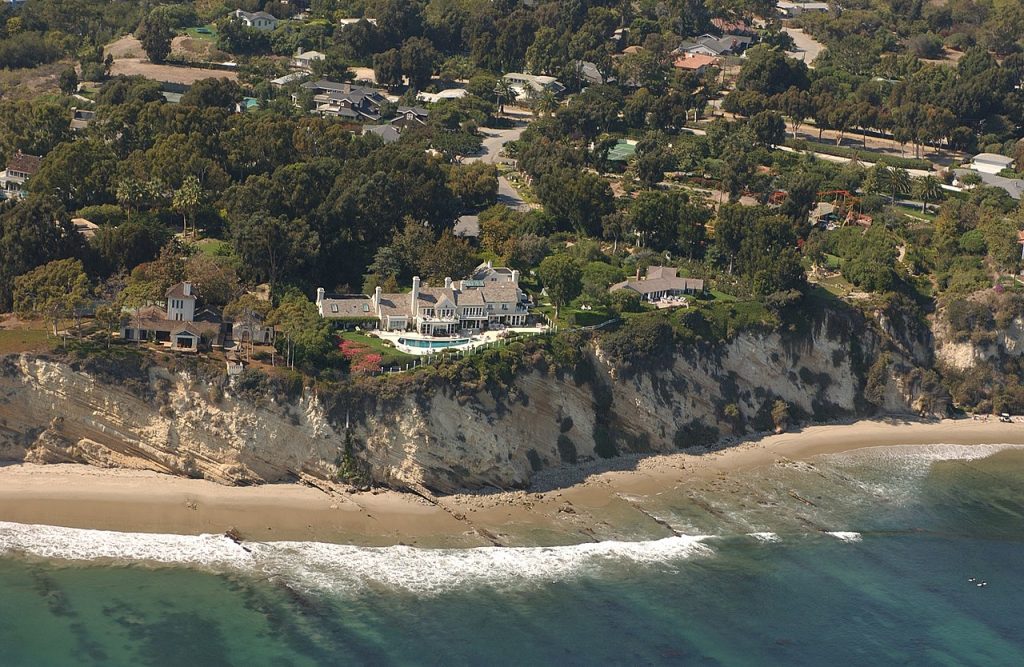The Battle over Malibu’s Beaches

The city of Malibu, California is best known for its fantastic climate and a 21-mile stretch of beaches. It’s also home to the rich and famous; seem above, for example, is a Malibu beachfront property once owned by Barbara Streisand. Given the price of such property, one could imagine the owners wishing to keep the beach area as private as possible. If some random sightseer wants to drive down the road parallel to the coastline, well, there’s not much the rich and otherwise-powerful can do. But if you tried to stop alongside those roads as recently as a few years ago, you’d have run into a problem: there were No Parking signs everywhere.
Kind of.
In 1972, California voters went to the polls and passed the California Coastal Commission Initiative, better known at the time as Proposition 20. The Initiative, which the state legislature made permanent four years later, created the California Coastal Commission. The Commission’s job was — and is — two-fold. First, the body has an environmentalism role, positioned roughly as “to protect and preserve the coast,” to paraphrase. Second, in the words of public television station KCET, the Commission is supposed to “guarantee[] the public’s access to that sea and shore.” In other words, Prop 20 made sure that all of California’s beaches are kept clean and are open to the public.
It’s that second part — public access — which is important for our purposes today. That beach at the bottom of the cliff in the picture above? If you’re in the neighborhood, you — yes, you — are allowed to spend the day there, even if you don’t live there or aren’t particularly rich or famous. And no, you won’t be trespassing. The beach is a public space, despite the very expensive house overlooking it.
For vacationers or the like, that’s quite the boon. But it should go without saying that Malibu’s beachside residents aren’t too fond of that law. So when it came to obtaining exclusive use of the beach abutting their property, they got creative.
In November of 2011, the Los Angeles Times reported that residents of the area began installing “No Parking” signs on the relevant roadways. But note the phrasing there — it was the residents, not the town, which put up the warnings. And residents don’t have the power to do that. In other words, the signs were fake. As Pat Veesart, then an enforcement supervisor for the California Coastal Commission told the Times, “anybody can go down to Home Depot and buy a ‘No Parking’ sign and a 4-foot wooden post.” Parking alongside those roads, despite what the signs said, was perfectly fine — except that there’s no way for a would-be beachgoer to know that.
For the better part of three years, the Commission — underfunded and understaffed — couldn’t do much about the fake parking signs. Veesart, in a ride-along interview with NPR in 2013, told a radio reporter that “the number of violations out there far exceed [the Commission’s] ability to address them,” calling the entire situation “very frustrating.” And while the Commission struggled to curtail the outbreak of fake signs, the Malibu residents found more ways to keep visitors off the shores. In the same NPR interview, Veesart noted that some residents created driveways leading to fake garages in order to reduce the amount of parking-friendly curb space. And per the Malibu Times, residents would often get some red paint and give a coat to the curbs near the houses; red-painted curbs, in the area, often meant parking is not allowed.
This scourage of fake no parking zones, thankfully, is beginning to abate. In 2014, the state legislature passed a law allowing the Commission to levy fines against those who put up these false signals and who failed to remove them after a warning. If the person doesn’t take down the No Parking sign or restore a red curb to its intended black with 30 days of being so instructed, they may fall prey to a fine “from hundreds of dollars to around $22,000,” according to the Los Angeles Times. Whether that will be enough to keep the super-rich from putting up fake No Parking zones is hard to tell at this point, but it seems to be working otherwise.
Bonus fact: About an hour’s drive up the coast from Malibu is Santa Barbara, another California beach town. If you’re downtown there, there’s a 75-minute limit for a streetside parking spot. And they enforce that pretty stringently — just ask Dan Greding, a contractor hired by the city to install the signs in 2014. It took him more than 75 minutes to do the job, and, as the local Fox affiliate reported, “while he was installing the signs, a city parking enforcement officer pulled up his truck and started ticketing it.” Despite the craziness of the situation, the legal system decided not to make an exception; when Greding appealed the ticket, the city upheld it.
From the Archives: Exit Sandman: Why go to the beach when you can take it with you?
